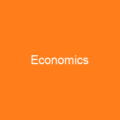Understanding Prices: The Currency of Market Transactions
Imagine a bustling marketplace where goods are exchanged, and every item has its own unique value. This value is quantified through prices, which act as the currency in this grand economic dance. But what exactly is a price? It’s more than just a number; it’s a reflection of supply, demand, and production costs.
The Five Functions of Price
Milton Friedman once outlined five key functions that prices serve in a free-enterprise economy:
- Transmitting information about the relative importance of end-products and factors of production.
- Providing incentives for enterprises to produce valued products efficiently.
- Guiding resource owners towards their highest remunerated uses.
- Distributing output among resource owners.
- Rationing fixed supplies among consumers.
The Paradox of Value: Diamonds vs. Water
Have you ever wondered why diamonds, which are relatively rare and have no practical use, can cost more than water, a necessity for life? This is the paradox of value, first observed by classical economists. It highlights how prices don’t always reflect true utility or importance.
Negative Prices: A Rare Phenomenon
While most prices are positive, there have been rare instances where negative prices occur. In April 2020, the price of West Texas Intermediate crude oil turned negative for the first time in history, reaching -$37.63 per barrel. This means that someone holding a long position would pay others to take the oil off their hands due to storage concerns amidst an oversupply.
The Theory of Marginal Utility
To address the paradox of value, economists like Carl Menger proposed the theory of margin utility. This theory suggests that prices are determined by the marginal utility (the additional satisfaction) consumers get from each unit of a good or service.
The Integration of Classical and Neo-Classical Economics
Economists like Oskar Lange attempted to integrate classical political economy with neo-classical economics, bringing human volition to the center as a bargaining tool. However, this integration faced criticism from Piero Sraffa’s capital controversy, which highlighted gaps in market functioning theory.
Price Determination: Cost Plus Profit
In reality, prices are not just about production costs but also include the average rate of profit. For-profit companies aim to maximize financial gain by setting prices higher than their cost of production. Non-profit organizations like charities and educational institutions also set prices to maximize net revenue.
Price Points: A Retailer’s Perspective
In retail, the term ‘price point’ is often used to describe specific pricing strategies. For instance, stores might set prices at even amounts like $1 or £1, or charge a single unit price such as $1 or €1. This helps in creating clear and understandable pricing for customers.
Market Price: The Economic Value
The market price is the economic value at which goods are offered in the marketplace, studied extensively in microeconomics. It’s influenced by supply and demand dynamics and can be seen on restaurant menus as well.
Price Databases: Transparency in Markets
To increase price transparency, various databases exist. For instance, pricerating.org and the German Preistransparenzdatenbank provide valuable insights into market prices.
The Basic Price: A Seller’s Perspective
The basic price is the amount a seller receives from a buyer, excluding taxes and subsidies. Other terms like list price (MSRP/RRP/SRP) refer to the manufacturer’s recommended selling price, while ‘pay what you decide’ allows customers to choose their own prices based on perceived value.
Price Optimization: Maximizing Revenue
Using mathematical models, businesses can optimize pricing strategies. This involves determining how different prices affect customer response across various channels, ensuring maximum revenue and profitability.

Understanding prices is crucial for both buyers and sellers. Whether it’s the paradox of value or the intricacies of market dynamics, prices play a pivotal role in our economic lives. By grasping these concepts, we can navigate the complex world of commerce more effectively.
You want to know more about Price?
This page is based on the article Price published in Wikipedia (retrieved on March 15, 2025) and was automatically summarized using artificial intelligence.






